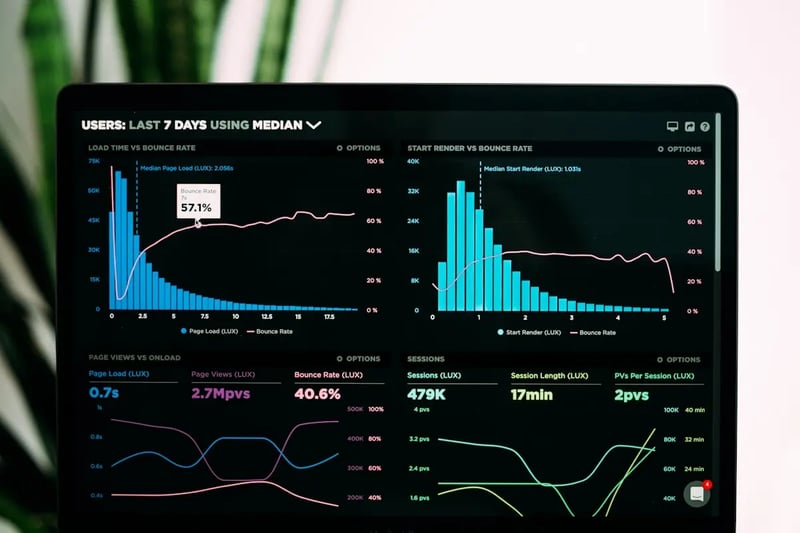CTR Formula: How to Calculate Click-Through Rate

The CTR (Click-Through Rate) formula is a fundamental metric in digital marketing that measures the effectiveness of your ads, emails, and content. The formula is simple yet powerful:
CTR = (Clicks / Impressions) × 100%
Where:
- Clicks = Total number of times users clicked on your ad or link
- Impressions = Total number of times your ad was shown to users
- Result = Percentage (%) representing click-through rate
For example, if your ad received 500 clicks and 10,000 impressions, your CTR would be 5%. This means 5% of people who saw your ad clicked on it.
Understanding and applying the CTR formula is essential for measuring campaign performance, optimizing ad spend, and improving marketing ROI. Whether you’re running Google Ads, email campaigns, or social media advertising, calculating CTR helps you gauge audience engagement and ad relevance.
Understanding the CTR Formula Components

Clicks
Clicks represent the total number of times users actively clicked on your ad, link, or call-to-action. This is the numerator in the CTR formula. Each click indicates user interest and engagement with your content. In most advertising platforms, clicks are counted when a user takes action, such as clicking an ad to visit your website or clicking a link in an email.
Important: Different platforms may count clicks differently. Google Ads counts all clicks including accidental clicks, while some email platforms distinguish between unique clicks and total clicks. Always verify your platform’s click counting methodology.
Impressions
Impressions are the total number of times your ad, link, or content was displayed to users, regardless of whether they clicked. This is the denominator in the CTR formula. An impression is counted each time your ad appears on a user’s screen, even if they don’t interact with it.
Key distinction: Impressions measure reach and visibility, not engagement. A high impression count with low clicks indicates your ad is being seen but not resonating with your audience.
Percentage Conversion
The formula multiplies the result by 100 to convert the decimal to a percentage. This makes CTR easier to understand and compare. For example, 0.05 becomes 5%, which is more intuitive than saying “0.05 click-through rate.”
Why percentage matters: Percentages allow for easy comparison across campaigns of different sizes. A campaign with 50 clicks and 1,000 impressions (5% CTR) performs the same as one with 500 clicks and 10,000 impressions (5% CTR), despite the different scales.
How to Calculate CTR: Step-by-Step Guide
Step 1: Gather Your Data
Before calculating CTR, collect accurate data from your advertising or analytics platform:
- Total Clicks: Find this in your platform’s reporting dashboard (Google Ads, Facebook Ads Manager, email marketing platform, etc.)
- Total Impressions: Located in the same reporting section as clicks
- Time Period: Ensure both metrics cover the same time frame
Pro tip: Always use data from the same reporting period. Mixing clicks from one week with impressions from another will give inaccurate results.
Step 2: Apply the Formula
Once you have your data, apply the CTR formula:
CTR = (Clicks / Impressions) × 100
Example calculation:
- Clicks: 500
- Impressions: 10,000
- Calculation: (500 / 10,000) × 100 = 0.05 × 100 = 5%
- Result: 5% CTR
Step 3: Interpret the Result
After calculating your CTR, interpret what it means:
- Above 5%: Excellent performance, your ad is highly relevant
- 3-5%: Good performance, room for optimization
- Below 3%: Needs improvement, review targeting and ad copy
Compare your CTR against industry benchmarks for your specific channel and industry to get meaningful insights.
Step 4: Calculate CTR in Excel
For bulk calculations, use Excel or Google Sheets:
Excel Formula: =B2/A2*100
Where:
- A2 = Impressions cell
- B2 = Clicks cell
- Result = CTR percentage
Google Sheets: Same formula works in Google Sheets
Formatting tip: Format the result cell as “Percentage” with 2 decimal places for clean display.
Step 5: Use a Calculator Tool
For instant results without manual calculation, use our CTR Calculator. Simply enter clicks and impressions to get immediate results with industry benchmark comparisons.
CTR Formula for Different Channels

While the basic CTR formula remains the same, different marketing channels may use slightly different terminology or have specific considerations.
Google Ads CTR Formula
Formula: CTR = (Ad Clicks / Ad Impressions) × 100%
Specifics:
- Impressions counted when ad appears in search results
- Clicks include all clicks, even accidental ones
- Average Google Ads search CTR: 3-5%
- Display ads typically have lower CTR: 0.5-1%
Example: 750 ad clicks ÷ 15,000 ad impressions × 100 = 5% CTR
Email Marketing CTR Formula
Formula: CTR = (Email Clicks / Emails Delivered) × 100%
Important distinction: Use “Emails Delivered” not “Emails Sent”. Delivered excludes bounced emails for more accurate measurement.
What counts as a click: Clicks on any link within the email body, including CTA buttons, text links, and images.
Average email CTR: 2-3% across industries
Example: 420 email clicks ÷ 14,000 emails delivered × 100 = 3% CTR
Social Media CTR Formula
Formula: CTR = (Post Clicks / Post Impressions) × 100%
Platform variations:
- Facebook: Clicks include link clicks, photo views, and post clicks
- LinkedIn: Typically higher CTR for B2B content (0.5-1%)
- Instagram: Lower CTR due to limited link placement (0.5-1%)
Example: 85 post clicks ÷ 12,000 post impressions × 100 = 0.71% CTR
Organic Search CTR Formula
Formula: CTR = (Organic Clicks / Organic Impressions) × 100%
Data source: Google Search Console provides this data
Position matters:
- Position 1: Average 30-40% CTR
- Position 2: Average 15-20% CTR
- Position 3: Average 10-15% CTR
Example: 1,200 organic clicks ÷ 50,000 organic impressions × 100 = 2.4% CTR
CTR Calculation Examples

Example 1: Google Ads Search Campaign (Excellent Performance)
Scenario: A B2B SaaS company running targeted search ads for “project management software”
Data:
- Clicks: 750
- Impressions: 12,000
- Campaign: Google Ads Search
Calculation:
CTR = (750 / 12,000) × 100
CTR = 0.0625 × 100
CTR = 6.25%Analysis: This 6.25% CTR is excellent for Google Ads search campaigns. It indicates highly relevant keywords, compelling ad copy, and strong audience targeting. The company should maintain this strategy and focus on conversion rate optimization.
Example 2: Email Marketing Campaign (Good Performance)
Scenario: E-commerce brand sending promotional email to engaged subscriber list
Data:
- Email Clicks: 420
- Emails Delivered: 10,000
- Campaign: Email Newsletter
Calculation:
CTR = (420 / 10,000) × 100
CTR = 0.042 × 100
CTR = 4.20%Analysis: This 4.20% CTR is above the industry average of 2-3% for email marketing. The campaign performed well, likely due to engaged subscribers and clear call-to-action. Consider A/B testing to push toward 5%+.
Example 3: Facebook Display Ads (Needs Improvement)
Scenario: Retail brand running display ads with broad targeting
Data:
- Ad Clicks: 85
- Ad Impressions: 15,000
- Campaign: Facebook Display
Calculation:
CTR = (85 / 15,000) × 100
CTR = 0.00567 × 100
CTR = 0.57%Analysis: This 0.57% CTR is below average for Facebook ads (typical range 0.9-2%). The campaign needs optimization. Recommendations: refine audience targeting, improve creative design, test different ad formats, and strengthen the value proposition.
Example 4: Organic Search Results (Good Performance)
Scenario: Blog post ranking in position 3 for target keyword
Data:
- Organic Clicks: 1,200
- Organic Impressions: 50,000
- Position: 3
Calculation:
CTR = (1,200 / 50,000) × 100
CTR = 0.024 × 100
CTR = 2.4%Analysis: This 2.4% CTR is below typical position 3 performance (10-15%). This suggests the meta title and description need optimization to be more compelling and relevant to search intent. Improving these elements could double or triple the CTR.
Common CTR Calculation Mistakes

Mistake 1: Using “Sent” Instead of “Delivered” (Email CTR)
Wrong: CTR = (Clicks / Emails Sent) × 100
Right: CTR = (Clicks / Emails Delivered) × 100
Why it matters: Bounced emails should be excluded from the calculation. If you sent 10,000 emails but 500 bounced, your denominator should be 9,500 (delivered), not 10,000 (sent). Using “sent” artificially lowers your CTR.
Impact: Can understate CTR by 5-10% depending on bounce rate.
Mistake 2: Confusing Unique Clicks with Total Clicks
Issue: Some platforms report both unique clicks (one per user) and total clicks (multiple clicks from same user).
Which to use:
- Total clicks for standard CTR calculation
- Unique clicks only when specifically analyzing unique user engagement
Example: If 100 users clicked your link 150 times total, use 150 for CTR calculation, not 100.
Mistake 3: Forgetting to Multiply by 100
Wrong: CTR = Clicks / Impressions = 0.05
Right: CTR = (Clicks / Impressions) × 100 = 5%
Why it matters: Without multiplying by 100, you get a decimal (0.05) instead of a percentage (5%). While mathematically equivalent, percentages are the standard format for reporting CTR.
Pro tip: Most analytics platforms automatically display CTR as a percentage, but when calculating manually, don’t forget this step.
Mistake 4: Comparing CTRs from Different Time Periods
Issue: Comparing CTR from different time periods without considering seasonality or campaign changes.
Example: Comparing December holiday campaign CTR (5%) with February CTR (3%) and concluding performance dropped, when actually holiday campaigns naturally perform better.
Solution: Compare like-with-like periods or account for seasonal variations.
Mistake 5: Using One CTR Benchmark for All Channels
Issue: Expecting the same CTR across Google Ads (3-5%), display ads (0.5-1%), and email (2-3%).
Reality: Each channel has different user behavior and typical CTR ranges.
Solution: Use channel-specific benchmarks from our industry benchmarks guide.
CTR vs Other Marketing Formulas
CTR vs CPC (Cost Per Click)
CTR Formula: (Clicks / Impressions) × 100
CPC Formula: Total Cost / Total Clicks
Relationship: Higher CTR typically leads to lower CPC in platforms like Google Ads. When your ads have high CTR, the platform rewards you with better ad positions and lower costs.
Example: Campaign A with 5% CTR might pay $2 CPC, while Campaign B with 2% CTR pays $4 CPC for the same keywords.
CTR vs CPM (Cost Per Mille)
CTR Formula: (Clicks / Impressions) × 100
CPM Formula: (Total Cost / Total Impressions) × 1,000
Relationship: CTR measures engagement, CPM measures cost efficiency of impressions. You can have low CPM but also low CTR if ads aren’t compelling.
Use case: CPM is for brand awareness, CTR is for direct response campaigns.
CTR vs Conversion Rate
CTR Formula: (Clicks / Impressions) × 100
Conversion Rate Formula: (Conversions / Clicks) × 100
Relationship: CTR measures ad effectiveness, conversion rate measures landing page effectiveness. You need both for campaign success.
Example: 5% CTR with 1% conversion rate = 0.05% overall conversion from impressions. Improve either metric to boost results.
Key insight: High CTR but low conversion rate suggests your ad promises don’t match landing page content.
Frequently Asked Questions
What is the CTR formula?
The CTR formula is: CTR = (Clicks / Impressions) × 100%. This calculates the percentage of people who clicked your ad or link compared to how many people saw it. For example, 500 clicks divided by 10,000 impressions equals 5% CTR.
How do you calculate CTR manually?
To calculate CTR manually: (1) Count total clicks, (2) Count total impressions, (3) Divide clicks by impressions, (4) Multiply by 100 to get percentage. Example: 500 clicks ÷ 10,000 impressions × 100 = 5% CTR.
What is the difference between CTR and click rate?
CTR (Click-Through Rate) and click rate are the same thing. Both terms refer to the percentage of impressions that resulted in clicks. The formula is identical: (Clicks / Impressions) × 100%.
Can CTR be over 100%?
No, CTR cannot exceed 100% because you cannot have more clicks than impressions. If you see CTR above 100%, there’s a data tracking error or you’re using the wrong metrics in your calculation.
How to calculate CTR in Excel?
In Excel, use the formula =B2/A2*100 where A2 is impressions and B2 is clicks. Format the result cell as “Number” with 2 decimal places. For percentage format, use =B2/A2 and format as “Percentage”.
What is a good CTR percentage?
A good CTR depends on your channel: Google Ads search (3-5%), display ads (0.5-2%), Facebook ads (0.9-2%), email marketing (2-3%). Use our industry benchmarks tool for specific comparisons.
Why is my CTR so low?
Low CTR typically indicates: poor ad relevance, weak targeting, uncompelling ad copy, or mismatched search intent. Review your keywords, refine targeting, test new ad variations, and ensure your offer matches user expectations.
How often should I calculate CTR?
Calculate CTR regularly based on campaign type: daily for active paid campaigns, weekly for email campaigns, monthly for organic search. Consistent monitoring helps identify trends and optimization opportunities quickly.
Try Our CTR Calculator

Ready to calculate your CTR instantly? Our free CTR Calculator provides:
- Instant Results: Real-time calculation as you type
- Industry Benchmarks: Compare your CTR with 20+ industries
- Smart Insights: Get personalized improvement recommendations
- Reverse Calculation: Find required clicks or impressions
- History Tracking: Save and compare your calculations
No signup required. Calculate your click-through rate in seconds and get actionable insights to improve your marketing performance.
Additional Resources:
- What is Good CTR? - Industry benchmarks and standards
- How to Improve CTR - Optimization strategies and tips
- Email CTR Calculator - Specialized email marketing tool
